30 Subtle Signs Something's Wrong with Your Dog
A dog—not eating? Call your vet, stat.

Unlike humans, dogs don't have the luxury of verbally communicating when something is wrong, so it's up to their owners—you know: you—to take extra care to make sure everything is a-okay. The last thing any pet parent wants is for their little furry one to be in pain. But if you don't learn how to read the telltale signs—of if you have a sick dog or not—there's a good chance you're inadvertently condemning your pup to suffer in silence.
Everything that your dog does—from how much they drink to how clingy they are to how they tilt their head when they're on a walk—could be an indication of something more serious, which is why it's important to note any behavioral and physical changes in your canine, no matter how small. Herein, we've rounded up some of the most commonly overlooked signs and symptoms of serious problems, so that your dog never has to play medical charades with you again. So put your scrubs on and get ready to play doggie doctor. And for more canine content, don't miss the 19 Things Your Dog Is Trying to Tell You.
1
Their breath smells.

Dog breath isn't exactly known for smelling minty fresh—but if your pooch is suffering from consistently bad breath, then it could mean that something more serious is at play. Experts say this halitosis could be a symptom of everything from kidney disease to liver problems, and it's worth consulting with a veterinarian to determine the underlying issue. The best (and most likely) scenario is that it's just a plaque buildup—something your vet can quickly take care of with a thorough oral cleaning—but it's better to be safe than sorry.
2
They're thirstier than usual.

Many human diseases can also show up in canines. A common one? Diabetes. And dogs, according to the American Kennel Club (AKC), with this chronic condition experience symptoms similar to humans, including insatiable thirst.
3
They're peeing in the house.
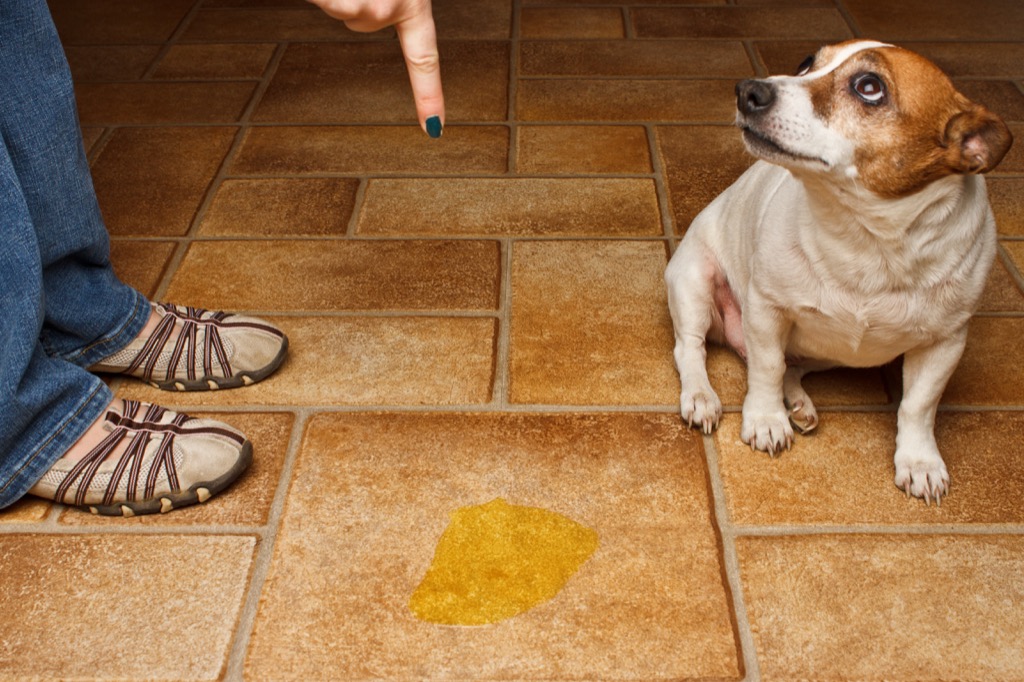
Instead of scolding your dog every time they pee in the house, consult a veterinarian and rule out any medical causes for this new, unsavory behavior. If your dog was previously trained to only go to the bathroom outside and is now having frequent accidents in the house, it could mean that a medical condition (like a urinary infection, bladder stones, kidney disease, or even diabetes) is preventing them from holding it in. And for more ways to know if your pup is in tip-top shape, watch out for the 15 Signs Your Dog Is Depressed.
4
They're sneezing a lot.
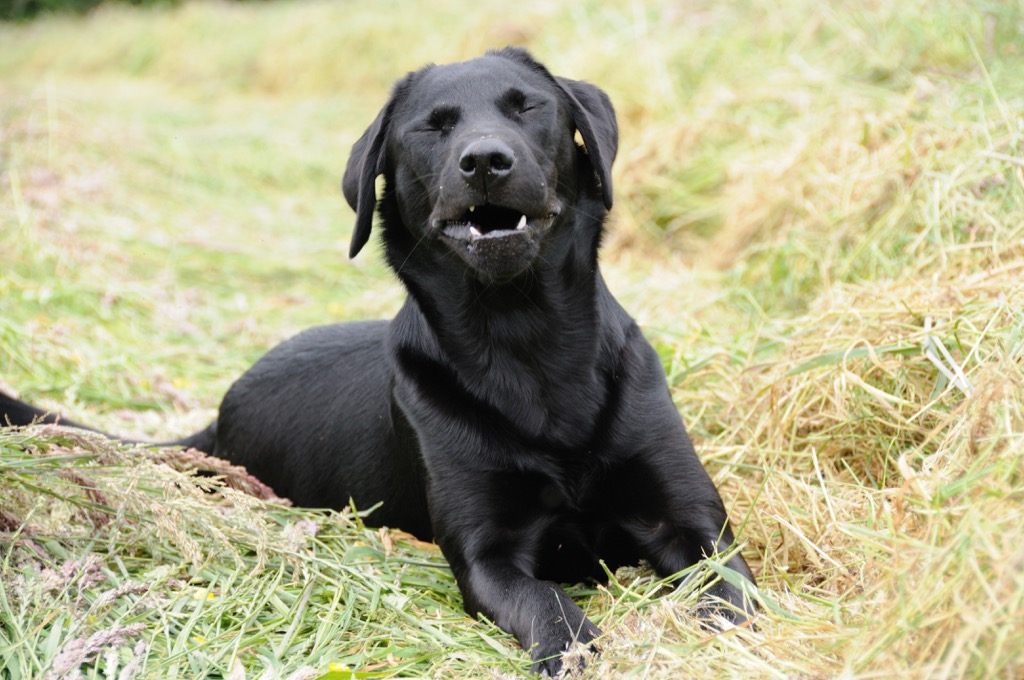
Your dog's occasional sneezes are nothing to worry about. (In fact, they're generally pretty adorable.) But if your pup is sneezing uncontrollably with a runny nose to boot, they might be suffering from any number of infections, including kennel cough, distemper virus, and, in extreme cases, dog flu. Some of these (like the flu) are short-term and won't cause any major damage, but others (like distemper virus) can lead to death if left unmanaged.
5
They won't leave your side.

"Any changes in your dog's normal behavior can indicate a problem," explains Jeff Travis, DVM, a veterinarian at Kyle Animal Clinic in Texas. These change could be a sign that your dog is not feeling well and is seeking comfort from you, so don't overlook any sudden clinginess (as flattering as it may be).
6
They're not hungry.
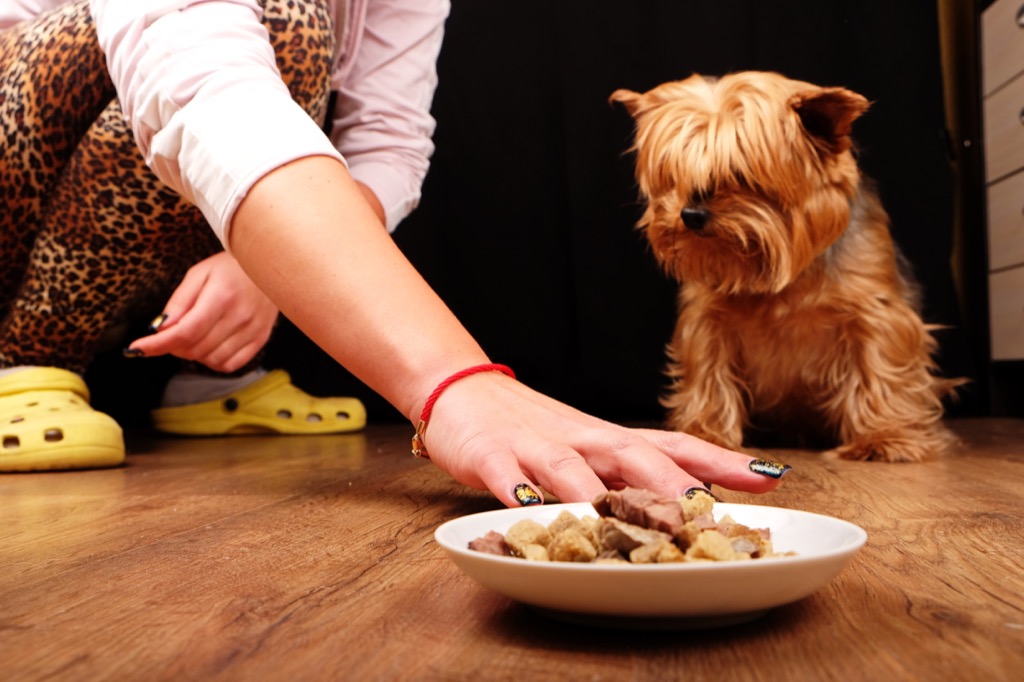
A dog—not hungry? That's when you know things are serious. Of course, dogs get nervous about eating in unfamiliar surroundings (like on vacation or at daycare), but if you're at home and your pooch is turning down their usual kibble, then the warning alarms should be going off.
Since your dog isn't exactly able to explain what's going on, there are many not-so-pleasant reasons for a dog rejecting food (like gingivitis, liver problems, kidney failure, and cancer) that you need to rule out with a licensed professional. If the doctor determines that your dog is clear of any serious illnesses, then the AKC recommends serving up some shredded chicken, rice, and sweet potato balls for maximum health benefits and minimal resistance. And for more animal wellness tips, don't miss the 5 Genius Ways to Keep Your Dog Cool This Summer.
7
They don't want to go on walks anymore.
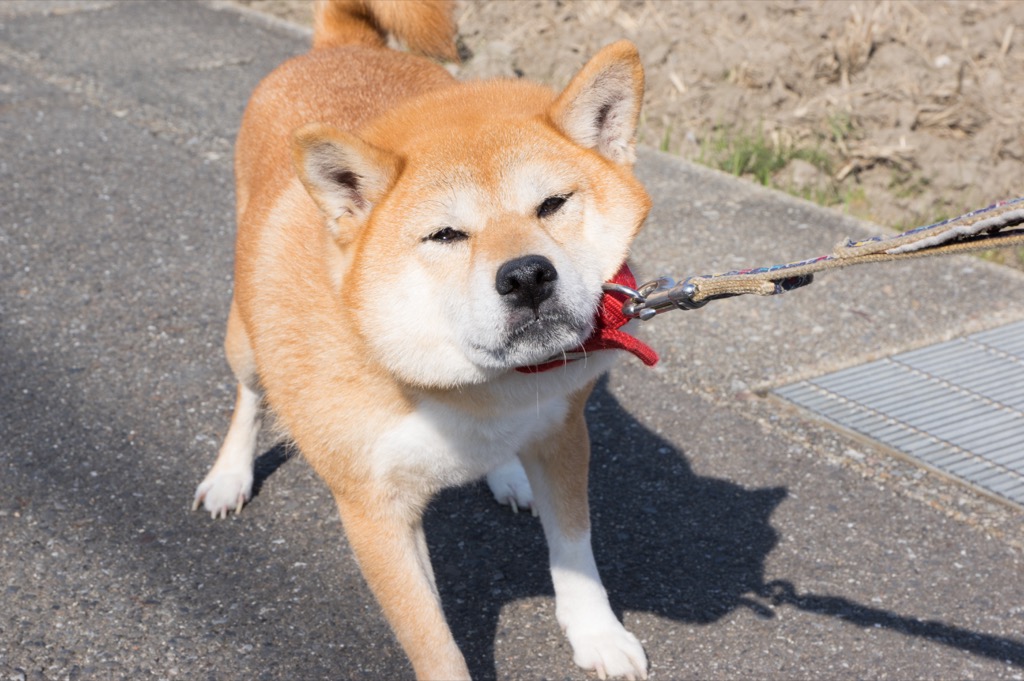
A leash-loving pup isn't going to start hating their walks all of a sudden unless something else is going on. Any number of illnesses can knock the energy out of your dog and make them more lethargic, so all energy level changes should be monitored (and you should always keep an eye out for other symptoms).
8
They're unusually snappy with you.
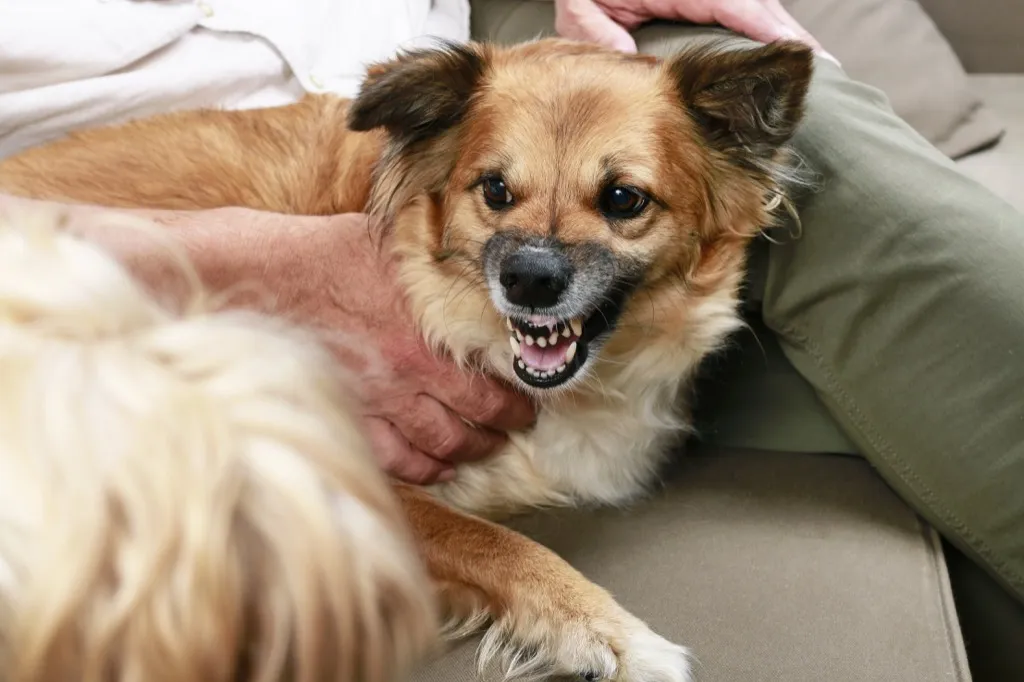
Don't take it personally if your docile dog starts growling at you out the blue. More often than not, a dog will only become aggressive with people when they are in pain and don't want to be touched, even if those people are their family. If you notice this unusual aggression and anger persisting for more than a few days, take your dog to their doctor—they could be suffering in silence.
9
Their coat looks greasy.

"A healthy coat should be shiny and smooth, not brittle or coarse, and healthy skin should be supple and clear, not greasy, flaky, or bumpy," writes Cheryl Yuill, DVM, Msc, CVH, a veterinarian and animal expert. "Illness or stress, especially if it is chronic or long-standing, will affect the appearance of your pet's coat, particularly its luster and texture, and many dogs will shed excessively when they are under stress." If you notice extra fur around the house or your dog's coat starts to look extra greasy, Dr. Yuill warns to watch out for things like hormonal imbalances, parasites, and arthritis.
10
They're hiding from you.
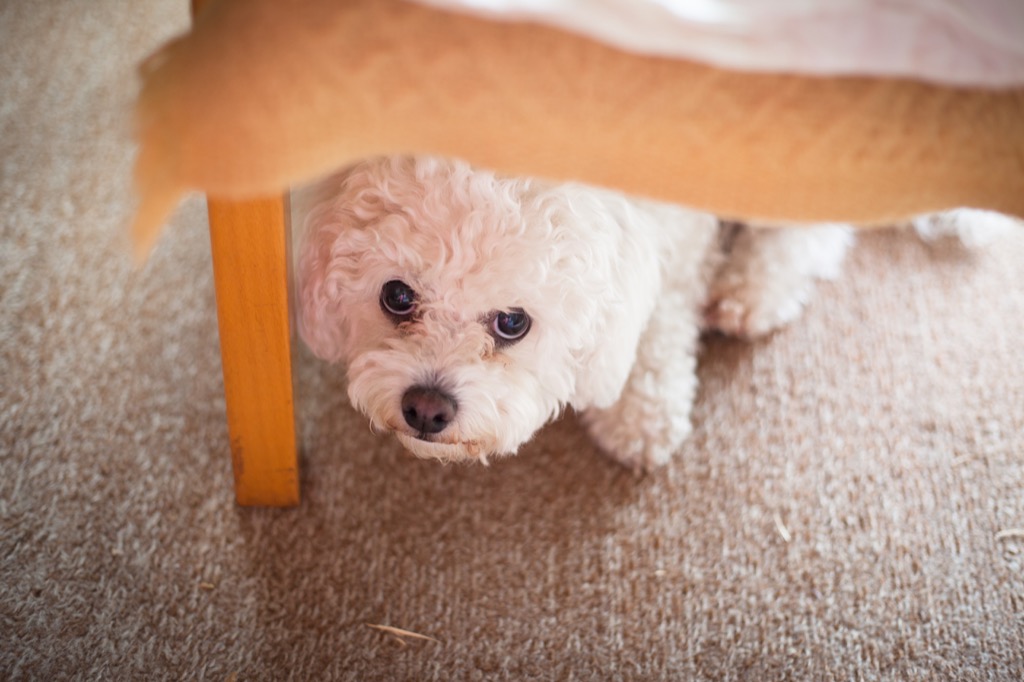
It is a well-known fact among pet owners that dogs will hide from their humans when they are close to death. One school of thought surrounding this idea is that canines hide instinctively for protection, though no one is 100 percent sure as to the true rationale. If your dog is getting harder and harder to find around the house, bring them to a vet to find out whether their health is deteriorating—especially if they're on the older side. And if you love dogs, then don't miss these 50 Amazing Animal Facts.
11
They're starting to eat less.
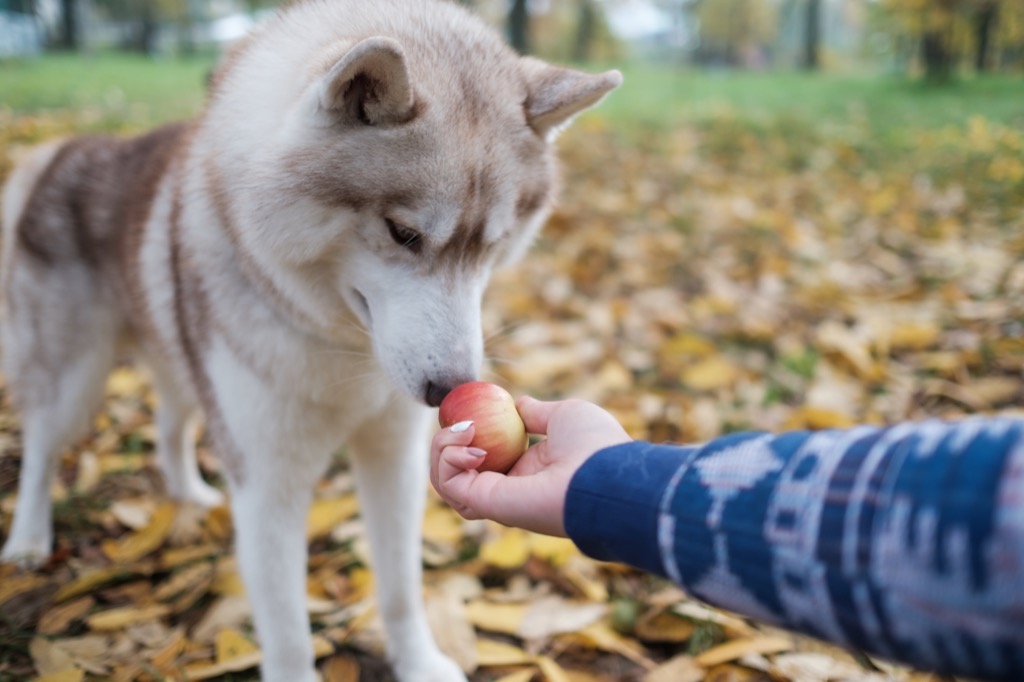
Maybe your dog isn't ignoring their food entirely, but you have noticed that they're approaching the food bowl less and less. This subtle act could indicate that your dog is struggling to stomach their food because of more momentous health complications. "The chronic signs that are slower in the onset are the hardest to detect," says Dr. Travis. "Everyone notices the dog that immediately starts limping, but few people realize that their pet is gradually eating less, for instance."
12
They're scratching their ears incessantly.
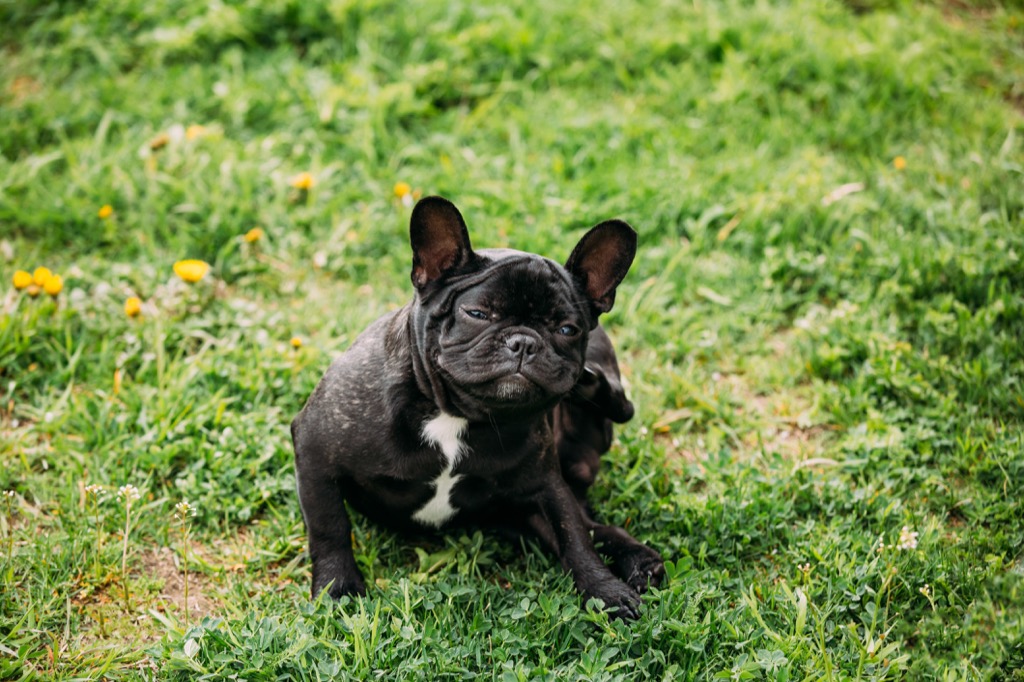
Watch out for an overly itchy dog. According to ASPCA Pet Health Insurance, non-stop scratching could indicate that your dog is suffering from "fleas, dry skin, mange, or other skin problems."
13
They're having diarrhea.

Diarrhea is always an indication that something is amiss, regardless of species. In canines, it can be a symptom of everything from a mild stomach bug to a parasitic infection—and whatever the case may be, it's worth getting your dog's grumbling tummy checked out.
14
They're chewing up your belongings.
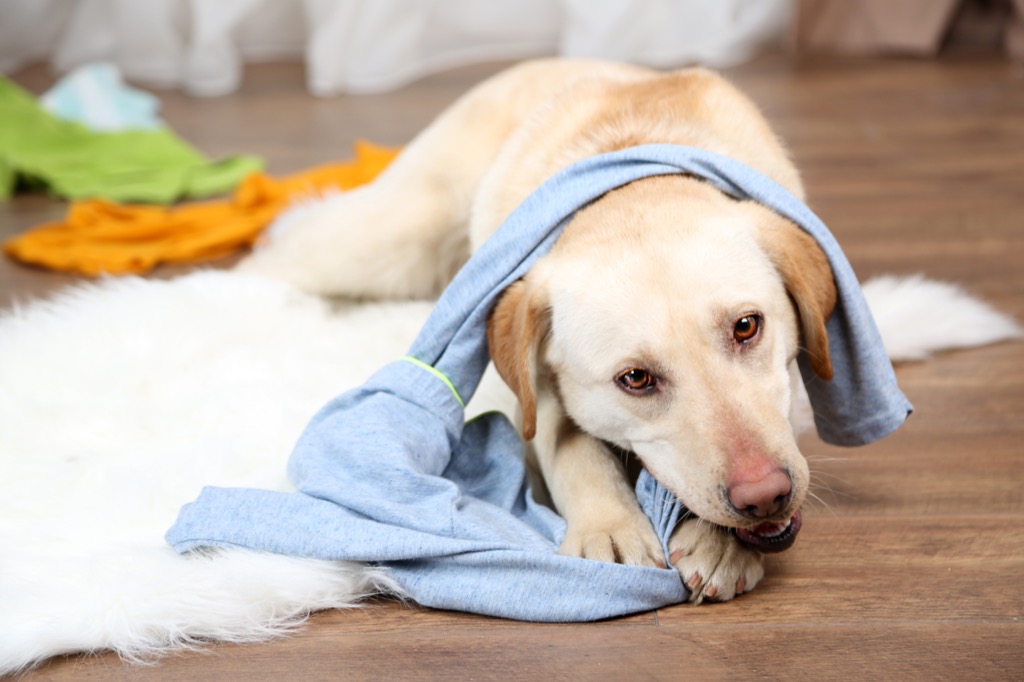
Your dog isn't just destroying the couch and all of your clothes because they hate you. Rather, this behavior (along with things like peeing in the house) is a symptom of separation anxiety, according to the ASPCA, which can be handled with help from a professional trainer.
15
They're uncharacteristically anxious.

In dogs suffering from anxiety, you might see things like diarrhea, an increase in destructive habits, a loss of appetite, and excessive barking in addition to a general fear of everyone and everything. However, your dog's anxiety can be both the sickness itself and a symptom of something bigger, which is why it's important to get an anxious pup checked out by a professional. And if you're feeling as wound up as your dog, try these 12 Genius Tricks for Turning Anxiety into Excitement.
16
They're napping in their crate.
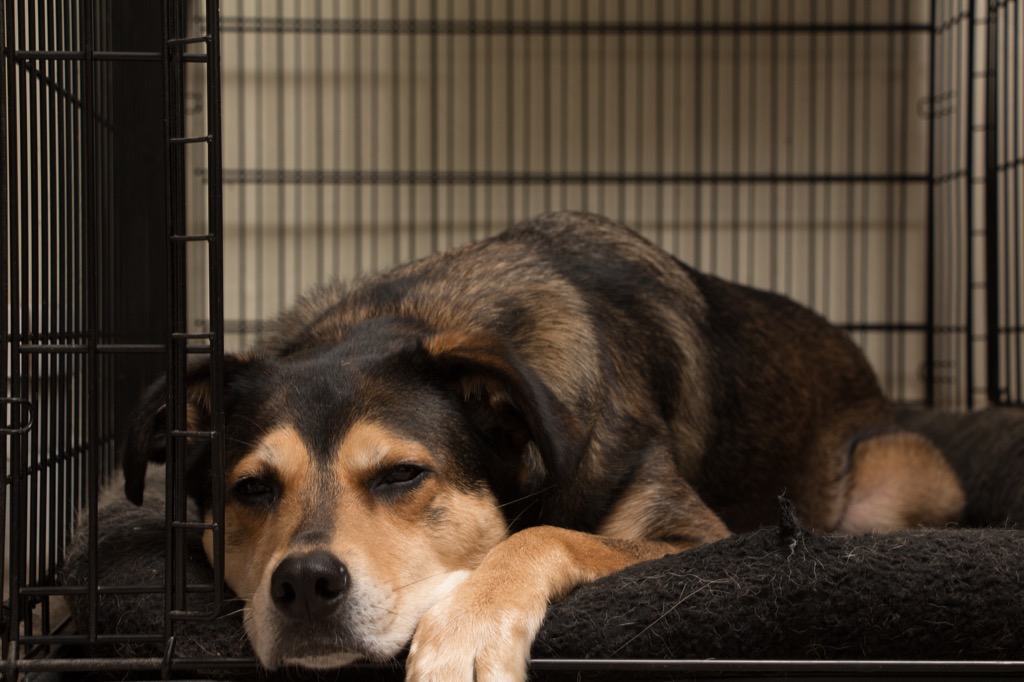
If your dog hasn't used their crate since they were a puppy and is now sleeping in it both during the day and at night, they might be feeling under the weather. "Any change in your pet's behavior from what it normally does is a reason to see your veterinarian," Mark Stickney, DVM, director of general surgery services at Texas A&M University College of Veterinary Medicine, told WebMD. "Dogs and cats can't tell us when something hurts or doesn't feel good, but the owners that see them every day will realize when they're not just being their regular selves."
17
Their ears droop more often.
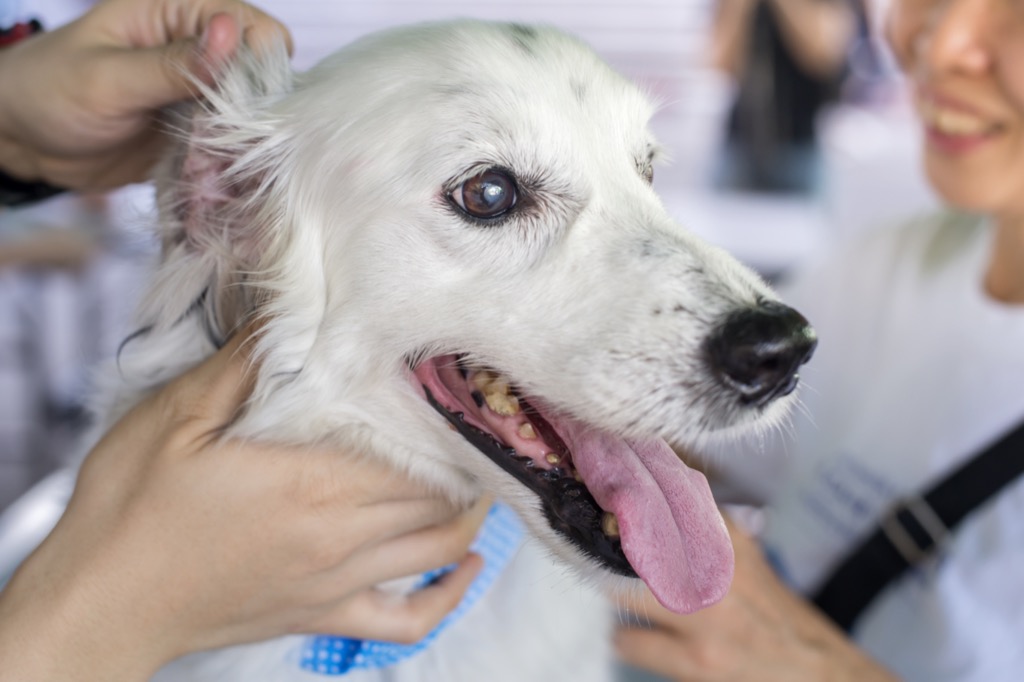
The most obvious sign of an ear infection in dogs is the unpleasant odor that emanates from the infected ear (as every dog mom or dad can attest to). However, another less obvious indication of this infection is drooping ears—which, if left ignored, can turn into permanent hearing loss.
18
They're only chewing with one side of their mouth.
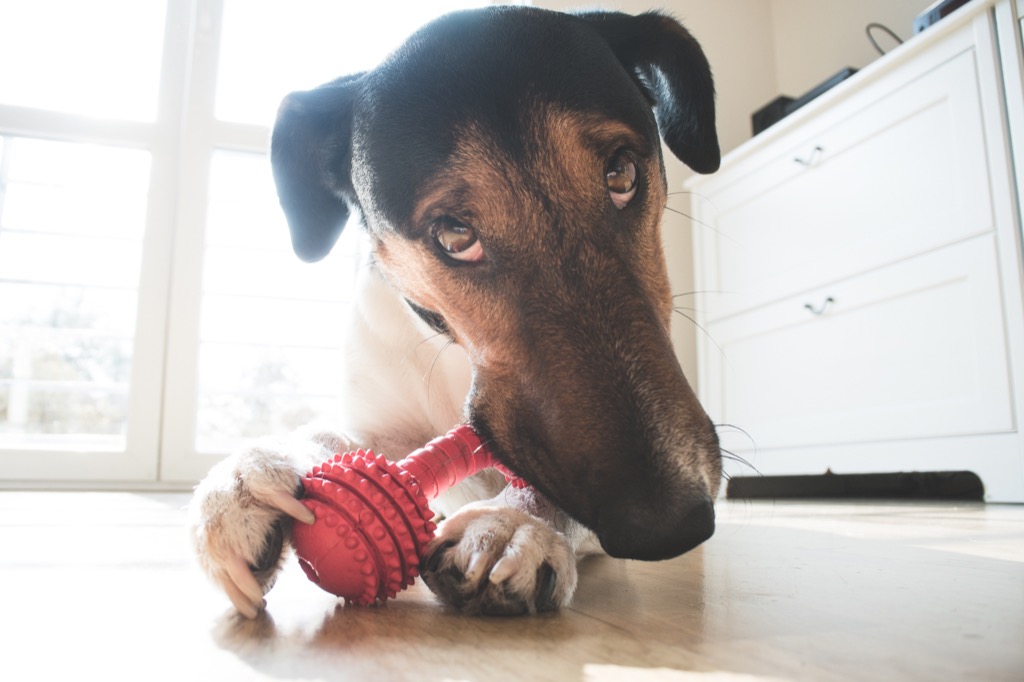
"If your dog is chewing only on one side or stops eating dry food in favor of soft food, then they might be suffering from dental problems," says Dr. Travis. And according to Animal Planet, a staggering 85 percent of canines over the age of four suffer from some type of gum disease, so it's important to watch out for the less obvious signs of mouth pain.
19
They're chasing their tail a lot.
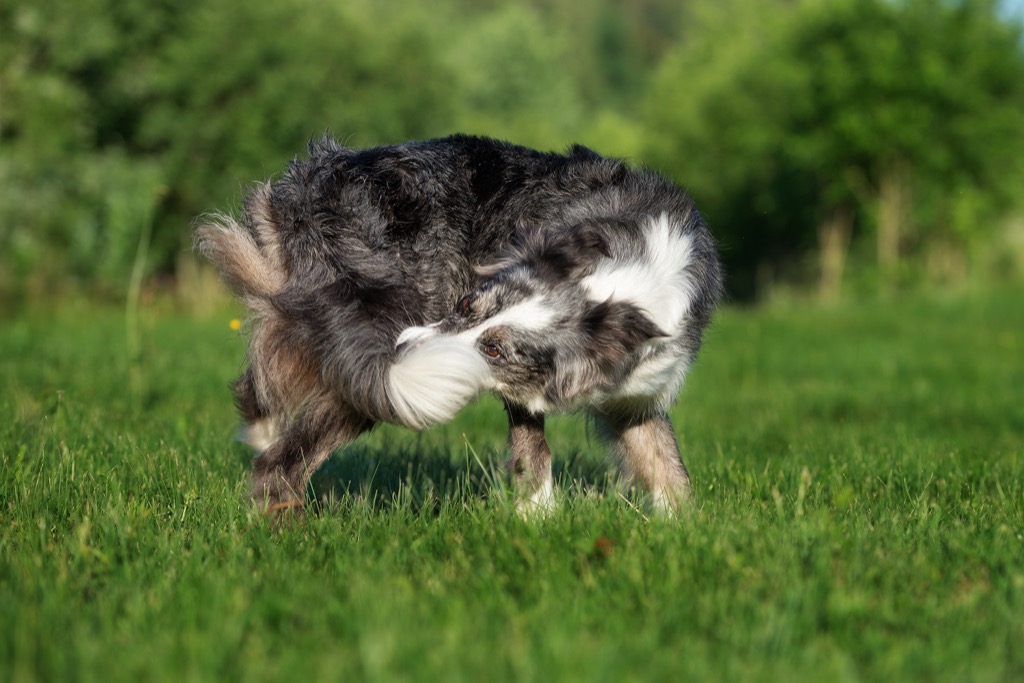
Every dog gets the occasional satisfaction out of chasing their tail until it's caught, but if you notice your dog doing this for hours at a time, they could be suffering from an ear infection known as labyrinthitis. This terrifyingly named condition messes with a pup's posture and coordination, and makes them appear unsteady for no known reason.
20
They're panting heavily.
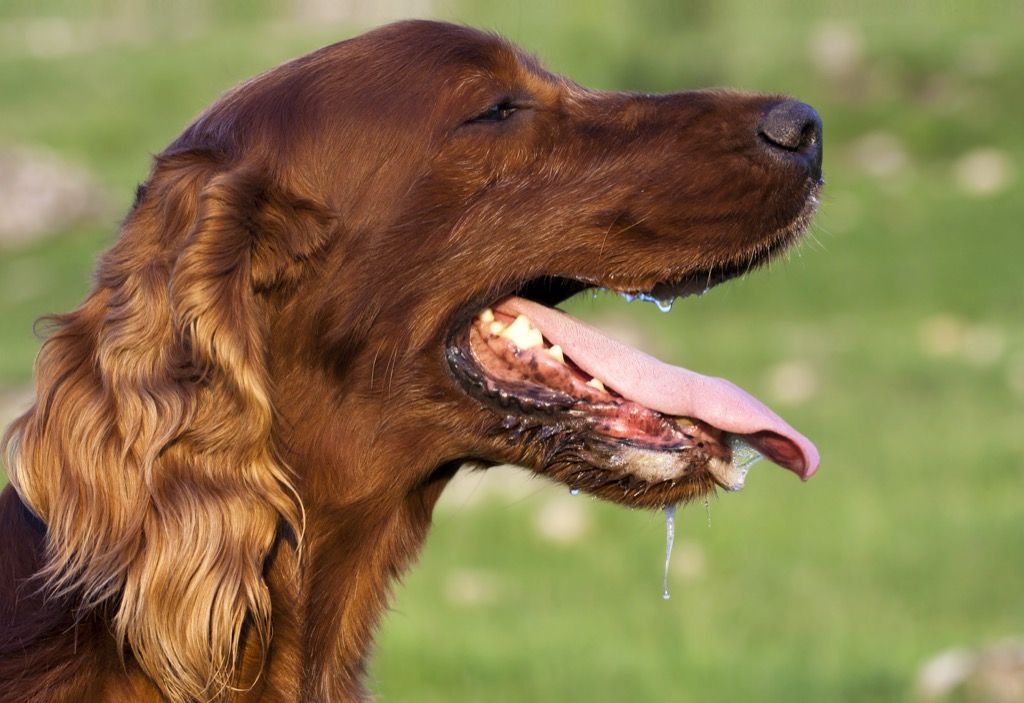
No, panting excessively after a four-mile run isn't cause for concern. But if your pup hasn't moved from the couch all day and you can still hear their breathing from the other room, it could mean they're dealing with heat failure, Cushing's syndrome, or a respiratory disorder like pneumonia. Also, dog lovers, don't miss these 40 Dogs So Ugly They're Actually Cute.
21
Their gums are turning black.

Dogs don't brush their teeth as often as humans do, so unsurprisingly, they're much more susceptible to gum diseases like gingivitis (which can lead to tooth loss if left ignored and untreated). One of the symptoms of an infection is inflamed black patches on your pet's normally pink gums, so make sure to always check under the lips (and to keep up your dog's dental hygiene so this never happens). And for ways to keep your human pearly whites in tiptop shape, don't miss the 20 Secrets for Whiter Teeth After 40.
22
Their cuts won't heal.
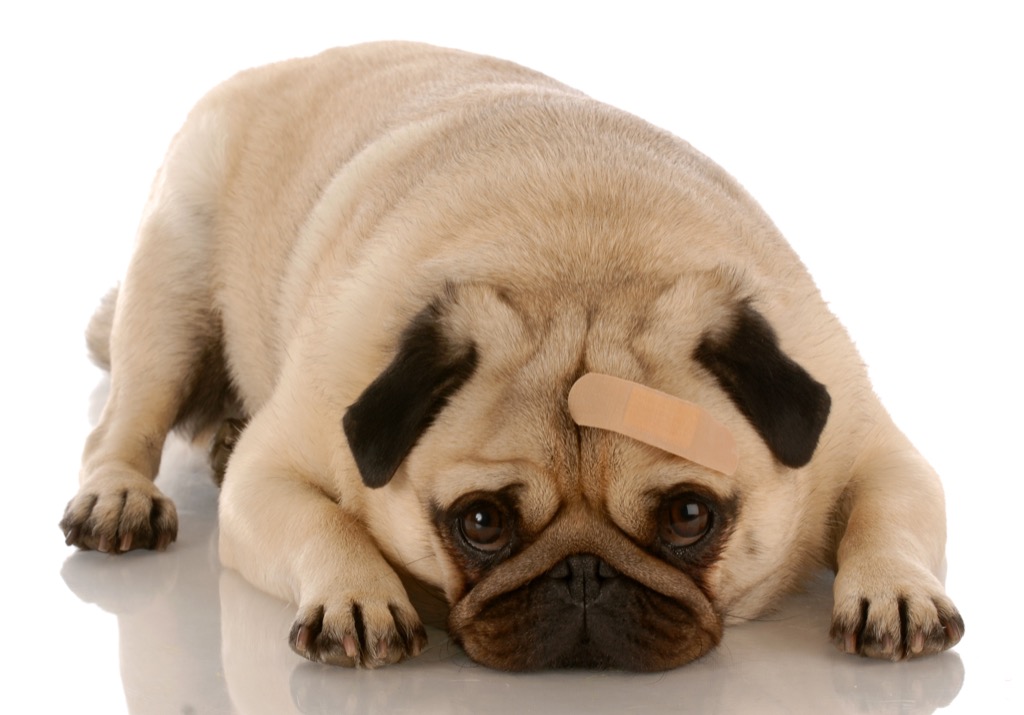
If you notice that your dog has a nick on their body that keeps opening up instead of healing like it should, it's probably time to consult the doctor. These wounds that won't scab over and heal might be a sign of abnormal cell growth, or canine cancer.
23
They're walking differently.

Given that dogs are common carriers of ticks, it's little surprise that Lyme disease is a relatively common canine condition. And in addition to other symptoms like lethargy and loss of appetite, one of the signs of Lyme disease in a dog is stiffness, which can be observed when a dog walks around. Lyme disease is just as serious in dogs as it is in humans, so make an appointment with the veterinarian if you're worried about a potential infection. And for insect infections to watch out for in yourself, learn the 17 Signs Your Bug Bite Is Something Serious.
24
They're coughing.

"Dogs don't get asthma, so coughing could signal bronchitis, pneumonia, a heart problem, or tracheal collapse (when weak cartilage in the airway hinders breathing)," writes Justine Lee, DVM. Luckily, most canine coughs can be treated with either medication or surgery, so long as you bring the dog to the doctor in a timely manner.
25
The whites of their eyes are red.
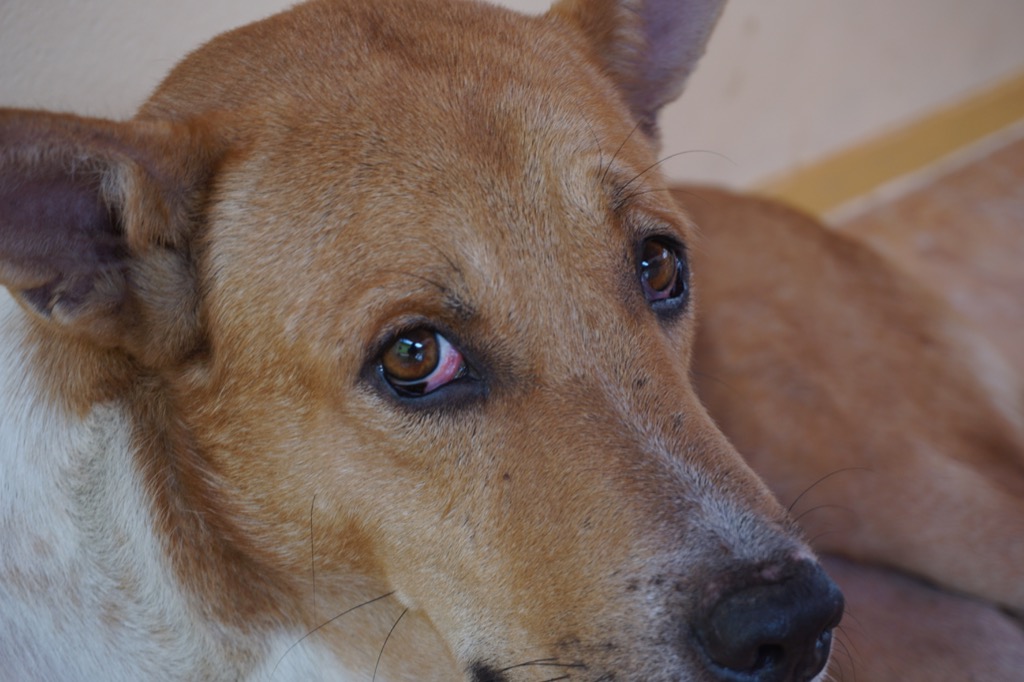
The whites of your dog's eyes should never be red, as this is a sign of either inflammation or infection. Certain eye disorders can lead to permanent blindness, so any possibility of an infection should be handled in a timely manner.
26
They're losing a lot of fur.

Don't assume that your dog is losing their fur because of normal shedding. Mites, allergies, and hypothyroidism have also been known to cause hair to fall out.
27
They can't poop.

Not only can this be a sign of complications like kidney failure or blood poisoning, but if your dog doesn't poop for a long period of time, this blockage might require surgery to evacuate the colon.
28
They're eating dirt.

Dogs might enjoy eating some pretty gross things, but dirt isn't one of them. According to the AKC, when a dog starts digging in to a pile of dirt, it could mean that they're suffering from anemia (a reduction of red blood cells).
29
They're licking their paws.
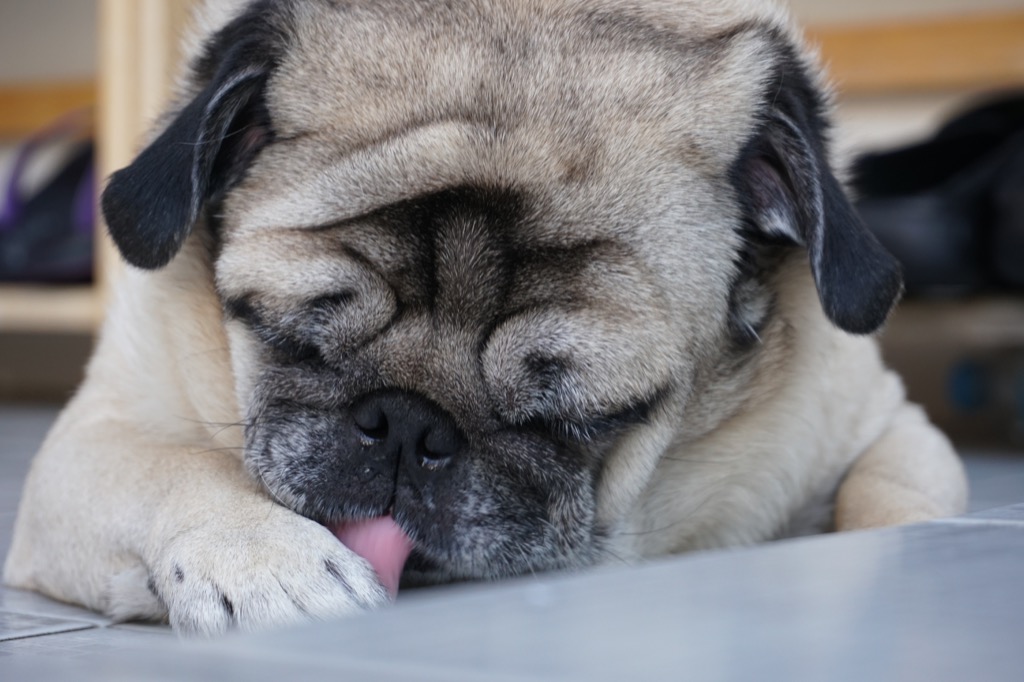
Dogs, like humans, are susceptible to allergy season. And if you notice your dog going at their paws like they're hunks of meat, it could mean that they're suffering from a bad allergy.
30
Their head is tilted.

"Since animals can't speak and tell us they 'feel dizzy' or 'can no longer see out of their left eye,' subtle true strokes can go unnoticed," Virginia Sinnott, DVM, DACVECC, chair of the infection control committee at MSPCA-Angell, told PetMD. However, it is still possible to figure out when a dog is having a stroke, using such external cues as a head tilt, the inability to walk, and a head tilt. And if you also own a cat, don't miss the 30 Surprising Ways Your Cat Communicates With You.
To discover more amazing secrets about living your best life, click here to sign up for our FREE daily newsletter!





















